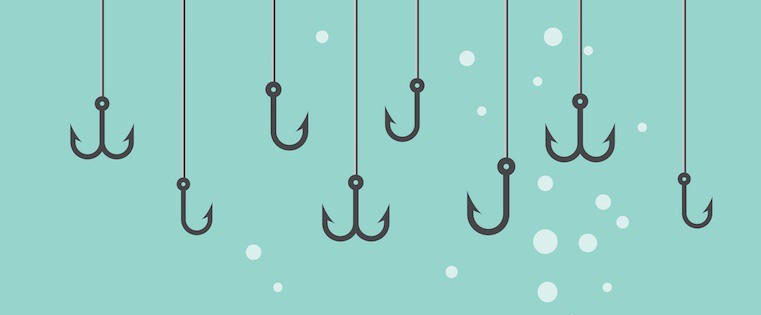


A lead is someone who has expressed his/her desire in your products or services. A Lead can come through many sources such as your website, through word of mouth, or even through a phone call. Digital Marketing Solutions which direct traffic to the website, improve search engine rankings, and increase web referrals account to an astounding 93% of leads. A qualified lead is a prospect that is starting to exhibit a buying behavior.
Lead generation is the process of attracting and converting strangers and prospects into someone who has indicated interest in your company's product or service. Some examples of lead generators are job applications, blog posts, coupons, live events, landing pages and other online content.
Inbound lead generation is the creation of content and campaigns that bring in website visitors and converts them into leads. It does this by making your brand more discoverable online, in search engines and social media platforms, and by using valuable content to engage visitors in an information exchange - their contact information in return for your knowledge - so that ongoing communication can be achieved.
When a stranger initiates a relationship with you by showing an organic interest in your business, the transition from stranger to customer is much more natural.
Lead generation falls within the second stage of the inbound marketing methodology. It occurs after you've attracted an audience and are ready to convert those visitors into leads for your sales team (namely sales-qualified leads).
Lead generation goes through the following 4 essential steps:
A visitor discovers your business through one of your marketing channels, such as your website, blog, or social media page. This particular step is based primarily on your effective “Lead Generation Marketing” that enables you to attract visitors by feeding the right content into your various promotional channels.
That visitor then clicks on your call-to-action (CTA) — an image, button, or message that encourages website visitors to take some sort of action.
That CTA takes your visitor to a landing page, which is a web page that is designed to capture lead information in exchange for an offer (Such as, a demo, information, e-Book… etc.)
Once on the landing page, your visitor fills out a form in exchange for the offer. (Forms are typically hosted on landing pages, although they can technically be embedded anywhere on your site.) VOILA! You have a new lead. That is, as long as you’re following lead-capture form best practices.
Marketers and salespeople alike want to fill their sales funnel — and they want to fill it quickly.
Buying leads, as opposed to organically generating them, is much easier and takes far less time and effort, despite being more expensive. But, you might be paying for advertising anyway … so, why not just buy leads?
First and foremost, any leads you've purchased don't actually know you. Typically, they've "opted in" at some other site when signing up for something, and didn't actually opt into receiving anything from your company.
The messages you send them are therefore unwanted messages, and sending unwanted messages is intrusive. If the prospect has never been to your website and never opted in to receive messages specifically from you, then there's a high chance they could flag your messages as spam, which is quite dangerous for you. Not only does this train to filter out emails from you, but it also indicates to their email provider which emails to filter out.
Once enough people flag your messages as spam, you go on a "blacklist," which is then shared with other email providers. Once you get on the blacklist, it’s really, really hard to get back off of it. In addition, your email deliverability and IP reputation will likely be harmed.
As a result, it’s always better to generate leads organically rather than buy them.
Essentially, a sales lead is generated through information collection. That information collection is similar to the result of a job seeker showing interest in a position by completing an application, a shopper sharing contact information in exchange for a coupon, or a person filling out a form to download an educational piece of content.
Below are just a few of the many ways in which you could qualify someone as a lead. Each of these examples shows that the amount of collected information used to qualify a lead, as well as their level of interest, can vary.
Let's assess each scenario:
An individual that fills out an application form is willing to share a lot of personal information because he/she wants to be considered for a position. Filling out that application shows their true interest in the job, therefore qualifying the person as a lead for the company's recruiting team — not marketing or sales teams.
Unlike the job application, you probably know very little about someone who has stumbled upon one of your online coupons. But if they find the coupon valuable enough, they may be willing to provide their name and email address in exchange for it. Although it's not a lot of information, it's enough for a business to know that someone has interest in their company.
While the download of a coupon shows an individual has a direct interest in your product or service, content (like an educational ebook or webinar) does not. Therefore, to truly understand the nature of the person's interest in your business, you'll probably need to collect more information to determine whether the person is interested in your product or service and whether they're a good fit.
These three general examples highlight how lead generation differs from company to company, and from person to person. You'll need to collect enough information to gauge whether someone has a true, valid interest in your product or service.
Full Name: The most fundamental information needed to personalize your communication with each lead.
Email: This serves as a unique identifier and is how you will contact your lead.
Company: This will give you the ability to research your lead’s industry and company and how the lead might benefit from your product or service (mainly for B2B).
Job Title / Position: Understanding an individual's role will help you understand how to communicate with them. Every brand stakeholder will have a different take and perspective on your offering (mainly for B2B).
Country: Location information can help you segment your contact by region and time zone, and help you qualify the lead depending on your service.
State: The more detailed information you can obtain without sacrificing conversions, the better. Knowing your leads state can help you further qualify them.
Lead scoring is a way to qualify leads quantitatively. Using this technique, leads are assigned a numerical value (or score) to determine where they fall on the scale from “interested” to “ready for a sale” or from a numerical value between 1 and 5. The criteria for these actions is completely up to you, but it must be uniform across your marketing and sales department so that everyone is working on the same scale.
A lead’s score can be based on actions they’ve taken, information they’ve provided, their level of engagement with your brand, or other criteria that your sales team determines. For instance, you may score someone higher if they regularly engage with you on social media or if their demographic information matches your target audience.
Borrowing from the examples above, you might give a lead a higher score if they used one of your coupons — an action that would signify this person is interested in your product.
The higher a lead’s score, the closer they are to becoming a sales-qualified lead (SQL), which is only a step away from becoming a customer. The score and criteria is something you may need to tweak along the way until you find the formula that works, but once you do, you’ll transform your lead generation into customer generation.
Finally, we hope we’ve managed to give you insight into what a lead is and why it is important to have leads and how to effectively generate your business leads and turn them into loyal customers.